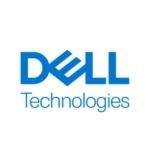What is our primary use case?
My primary use case for FlexPod is for usage at our remote and small branch offices.
How has it helped my organization?
It has had a big, positive impact, because now everything is centralized. I do not have to have a storage or network admin, nor a hypervisor. Everything is preconfigured. Therefore, we can ship it and manage it remotely from any server. It is all in a box.
We have been very impressed with it.
What is most valuable?
The biggest challenge that FlexPod helped me with: Now, I am not replying everyone at all my remote locations. I have approximately 38 small offices. Previously, I provided a lot of physical service, and replied to people.
How I fixed the issue: I configure a FlexPod. I will ship it. I will install it. Then, everything I can, I will manage from my main office. Thus, I reply to fewer people at all my locations.
What needs improvement?
We would like something like a FlexPod Express; we want a smaller version for small offices. At the moment, we have medium and larger offices, plus data centers, but we are also looking for something for smaller offices. A smaller, customizable, express solution, which would fulfill our local, small office needs.
I want to use the expansion to its fullest extent, scaling by deploying 10 to 15 virtual missions in a given FlexPod. Right now, all my virtual missions are approximately five or less, which does not appear to be utilizing the product fully. I want to have scalability in any situation, even during major outages.
For how long have I used the solution?
Three to five years.
What do I think about the stability of the solution?
We have been using it for the last four years. It has not had any outages yet, and I have had about eight deployments so far.
What do I think about the scalability of the solution?
I use FlexPod for small remote offices. I do not come across scalability often because I have a three node minimum, which is working out well. If we want to scale, we would need a lot of technical assessment. However, from what I have read and heard, it is easy to scale, so it should not be a problem.
How are customer service and technical support?
Once in a while, we do call Cisco. Sometimes Cisco will transfer call to NetApp. Sometimes my admins, by default, will call NetApp. Either way, it works fine. No one pushes back and says, "Why did you call Cisco or NetApp?" Both companies partner behind the scenes getting us the support that we need and help guide us through the process.
Which solution did I use previously and why did I switch?
We did not have a previous solution. We used to use Dell, IBM, and HPE machines, which were all old. We used to always have a lot of problems with other domain controllers, file servers, DNS, and DNCP.
Everything is now in FlexPod and virtual. It is always up and running.
How was the initial setup?
The initial setup is pretty straightforward. We do leverage a reseller to size it. Our partners are RoundTower and WWT. They configure the sizing, then they install the basic hardware. Afterwards, they will ship it to us.
We configure the hypervisor and storage network, then we ship it to branch office.
Which other solutions did I evaluate?
We are looking at the Dell solution, and also we are looking at Cisco Flex.
Right now, there is no immediate need to switch over.
What other advice do I have?
This is the best hyperconverged infrastructure. No need to be worried (or scared) on how these three solutions will sit in a box. Everything is prepackaged and rebuilt. It is seamless when you want to install or ship it. No complaints.
Most important criteria when working with a vendor: We were concerned how these three partners, NetApp, Cisco, and VMware, would come together for network, storage, and compute. At the beginning, we were a little concerned. It has been four years now with no issues, and it is going well.
Disclosure: My company has a business relationship with this vendor other than being a customer. Partner.








